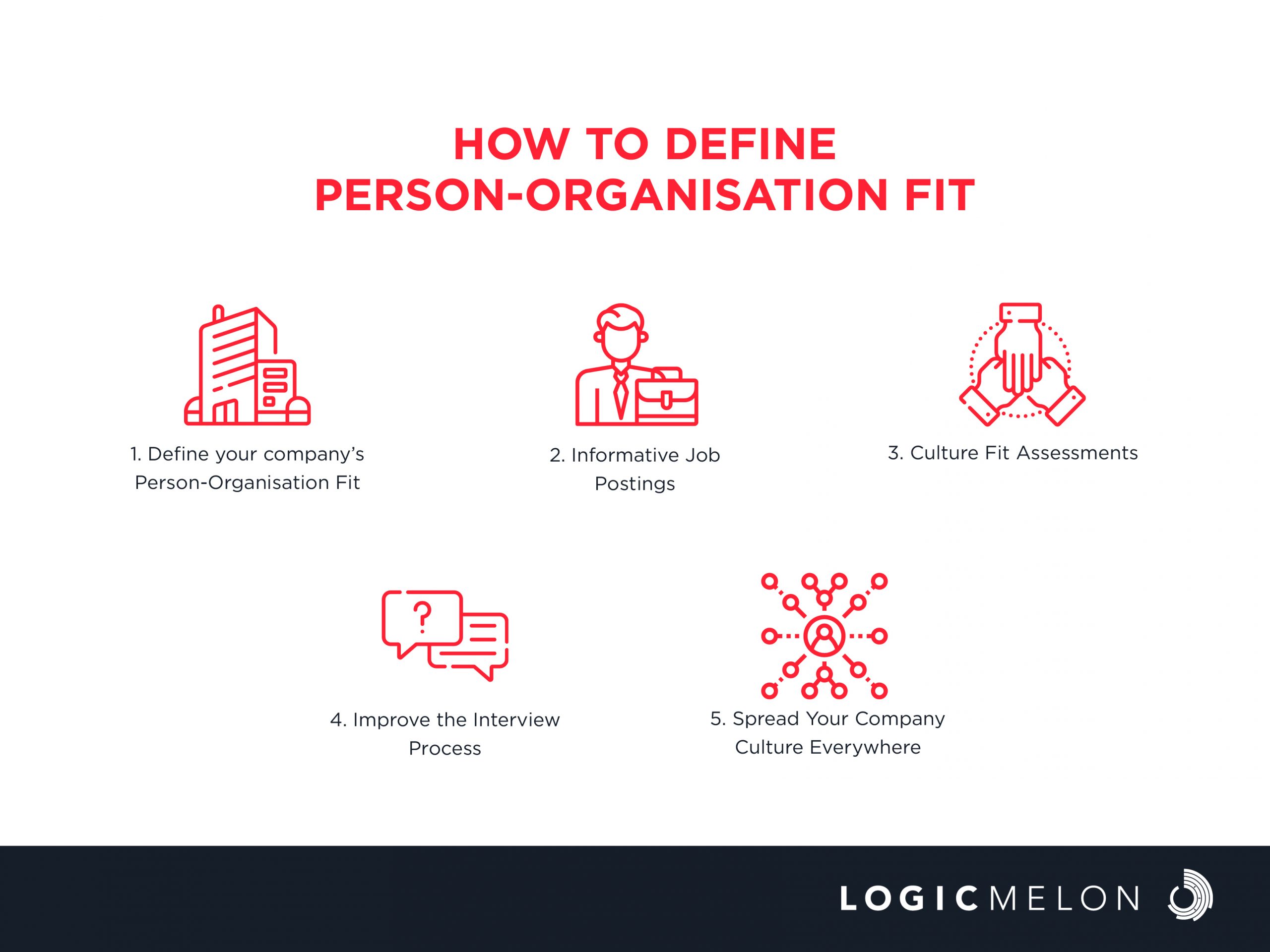What is a Person-Organisation Fit
To ensure compatibility between an employee and the organisation they work for, a good relationship between them is a must. This is where the person-organisation fit comes in.
What Is a Person-Organisation Fit?
A person-organisation fit can be defined as the compatibility between an employee and the organisation. The compatibility can be measured in terms of values, ethics, and mission. These qualities are noted and checked by the employee to see if their values and the organisation’s values are compatible. They are an indicator of how well an employee can perform in the company.
Why Is Person-Organisation Fit Important?
When hiring an employee, you must keep in mind how compatible they may be with your organisation. If they are a people person and like collaborating with other people on the team, they will likely fit in perfectly in an environment that suits them. If not, they may find it difficult to perform at their best.
It is important that the people working in your organisation have a good time while at work. The satisfaction of an organisation’s employees plays a major part in their success and growth. When people are happy with the work they do, it motivates them to do even better. This means more profit for the organisation. Hence, you must use person-organisation fit to hire potential candidates whose values align with that of the organisation.
The Benefits of Person-Organisation Fit
Using a person-organisation fit to hire candidates is a really good way to get employees who share the same values and ethics as the company.
The benefits of person-organisation fit include
1. Employee Engagement and Retention
Sometimes liking your job just won’t be enough to make you stay. If employees love the culture and values of the company they work for, it is less likely that they will leave their job to go work somewhere else. The place you work must have values and morals that align in some way with your own set of values.
Person-Organisation Fit can help you find people who not only have the right set of skills to match the role, but also the qualities they possess. People who love what they do at a place they enjoy being at become more engaged with the work they do. This can also ensure they stay at the company for a long time. A valuable employee who enjoys what they do can bring massive benefits to your organisation.
2. High-Quality Work Output
When someone loves doing what they do, it is more likely that they yield higher quality work output. This is an obvious benefit for the organisation. Bringing higher quality output to the organisation can also motivate them to have a better performance.
3. Referrals
If people like working in your company, they may refer their friends and family to the job. The people they refer will mostly likely be compatible with the organisation. This is beneficial for both the employee and the organisation.
How to Define Person-Organisation Fit
The following are the steps to define a person-organisation fit:

1. Define your company’s Person-Organisation Fit
First, you must define what your company’s person-organisation fit is. You must use this to measure the compatibility of potential candidates. It can be values, ethics, or morals that an employee must possess to be a perfect fit for your organisation. The values your organisation requires should be specific to avoid any misunderstandings.
2. Informative Job Postings
When you create job postings for your company, you should include details about the culture and ethics of your organisation. This way people will know beforehand what expectations the company has, and they can decide for themselves if they fit in with the organisation.
3. Culture Fit Assessments
A culture fit assessment can help you weed out incompatible candidates during the pre-selection process. This can help you avoid carrying the wrong candidates to the interview and further processes, which can ensure only potential candidates move further up the process.
4. Improve the Interview Process
During the interview, you can ask questions relevant to the culture, values, and ethics of the candidate. This provides information regarding the compatibility of the candidate.
During the interview you can ask questions like:
- What is an ideal work environment for you?
- Are you comfortable with working in a team?
- Do you consider yourself a team player?
- Are you comfortable being friends with your co-workers?
- Do you engage in casual conversations with your co-workers or are you strictly professional?
5. Spread Your Company Culture Everywhere
Make sure all internal and external components of your organisation represent your culture and values. This way you can let everyone know exactly what value systems your organisation prioritises.
Impacts Due to Lack of Person-Organisation Fit
Hiring candidates who do not have compatibility with your organisation can lead to hindrances in the future. It can have an impact on both employees, and the organisation.
Lack of Engagement
Employees who do not fit in with the culture of an organisation is less likely to perform better. This can lead to lower quality work output, not feeling satisfied with work, and ultimately low revenue for the organisation.
Dissatisfaction and Stress
Being dissatisfied with your work is never a good sign. An employee may face mental stress that leads to poor quality work. If they were working in an environment that motivates and encourages them, the quality of their work would be much better. Four in 10 adults said they had experienced worry (40%) or stress (40%).
Affects Morale
Low morale can lead to unhealthy work ethics and habits, which can affect the relationship with the organisation. This can lead to employees not having the confidence to grow and work towards their goals.
Increase in Employee Turnover
Every time an employee leaves, it costs the company time and money spent to train them. It also increases the cost of hiring and training new people in their positions.
Frequently Asked Questions
1. What is the difference between a person-organisation fit and a person-job fit?
Person-organisation fit refers to measuring an employee’s compatibility by their values, ethics, and morals. Person-job fit, on the other hand, refers to measuring compatibility according to their skill sets, knowledge, and abilities.
2. What is a major disadvantage of person-organisation fit?
A disadvantage when it comes to person-organisation fit is that you may get a person who has all the required qualities the organisation expects but lacks the skill set. If they are not trained properly, they could end up getting frustrated, and that can lead to low-quality work output.
3. What are the problems of lack of person-organisation fit?
The following are the problems of lack of person-organisation fit:
- Lack of engagement
- Dissatisfaction and stress
- Affects morale
- Increase in employee turnover
Conclusion
When hiring new recruits for your organisation, make sure you implement a person-organisation fit to find the right people. The people you hire must possess the values and ethics your organisation stands for. Having the right people with the right skills, and the right character around you can reap great benefits in the long run.
LogicMelon
Award-winning recruitment software that will find, attract, hire and analyse the way you want to work. At LogicMelon, we have experienced software recruitment marketing specialists to help you build effective recruitment solutions supported by the best customer service you’ll find anywhere!
Email: sales@logicmelon.com or call LogicMelon (UK) +44 (0) 203 553 3667 (USA) +1 860 269 3089
What Does an ATS Do?
An applicant tracking system (ATS) is software for recruiters to keep track of candidates’ profiles throughout the hiring process.
8 Different Employee Selection Methods for a Better Hire
These employee selection processes can make it easy for you to shortlist your candidates and choose the right fit for the role.
Understanding Interview Scoring Matrix
When all the candidates are evaluated using this interview scoring matrix, it is easier for the hiring manager to compare candidates competing for the same position.


